
Piecing Your Quilt Backing
After posting this reel yesterday on Instagram, I thought I would do a blog post just about piecing backing fabric. Most of these graphics were originally part of a post during the Violet Quiltalong so some of this is a repeat of information you might have seen before, but this post will discuss backing fabric more broadly and will include additional sizing.
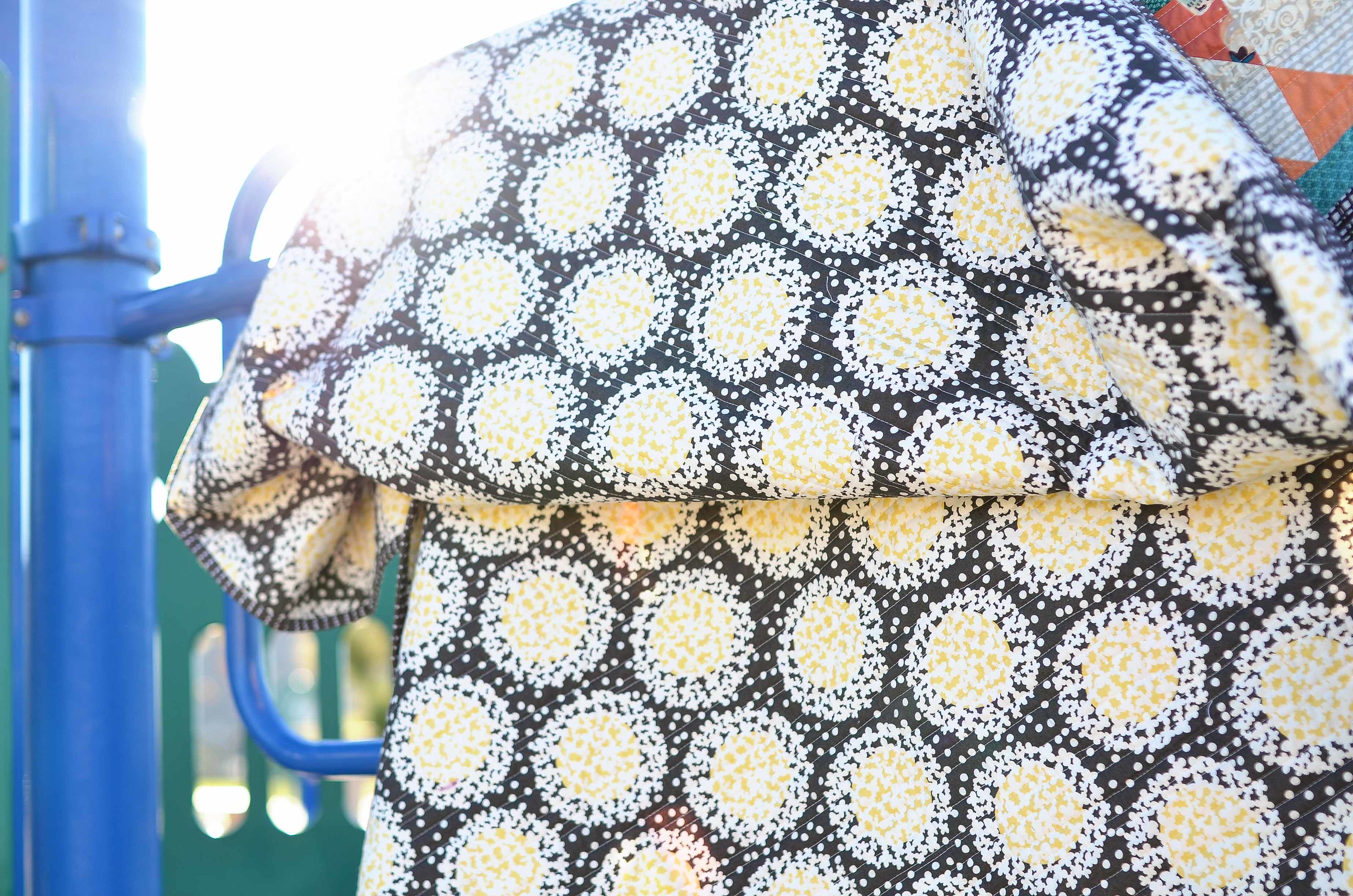
This graphic below shows how I define each quilt size — if you look online, you will find variations in all of these (and there is variation within my own patterns) but this is the rough guide that I use. There is also a formula for calculating the yardage needed for each quilt size.

I don't like piecing backing fabrics and I think that's true for most people. It's just one of those chores that has to be done alter finishing your quilt top and it's not exactly fun. More and more often, I am using 108" backing fabrics for my quilt to avoid this step but sometimes I still need to piece a backing fabric.
This is how I handle piecing backing fabrics from yardage for each quilt size. Most quilts that I make are lap size so that is primarily what I am working with, but I will list other sizes as well. If you are sending your quilt to be long arm quilted, you need 4" of extra backing fabric on each side of your quilt. Since I quilt most of my quilts myself, I don't stress about this too much for my own projects but it is important to have a backing fabric that is wider than your quilt top or basting can be very tricky.
Small Baby Size
This applies to small baby size quilts (my favorite size to use for my kids when they were younger). These quilts are 36" wide or smaller (or if you are a little more daring and don't need 3-4" of extra backing fabric on each side, you can get away with this type of backing for a 40" wide quilt).

Larger Baby Size
Many baby quilt patterns make quilts that are 40" wide or larger and you may need to piece your backing fabric. This always feels like a bummer for me because you just need a little bit more than your WOF but sometimes it just works out that way.

Lap Size
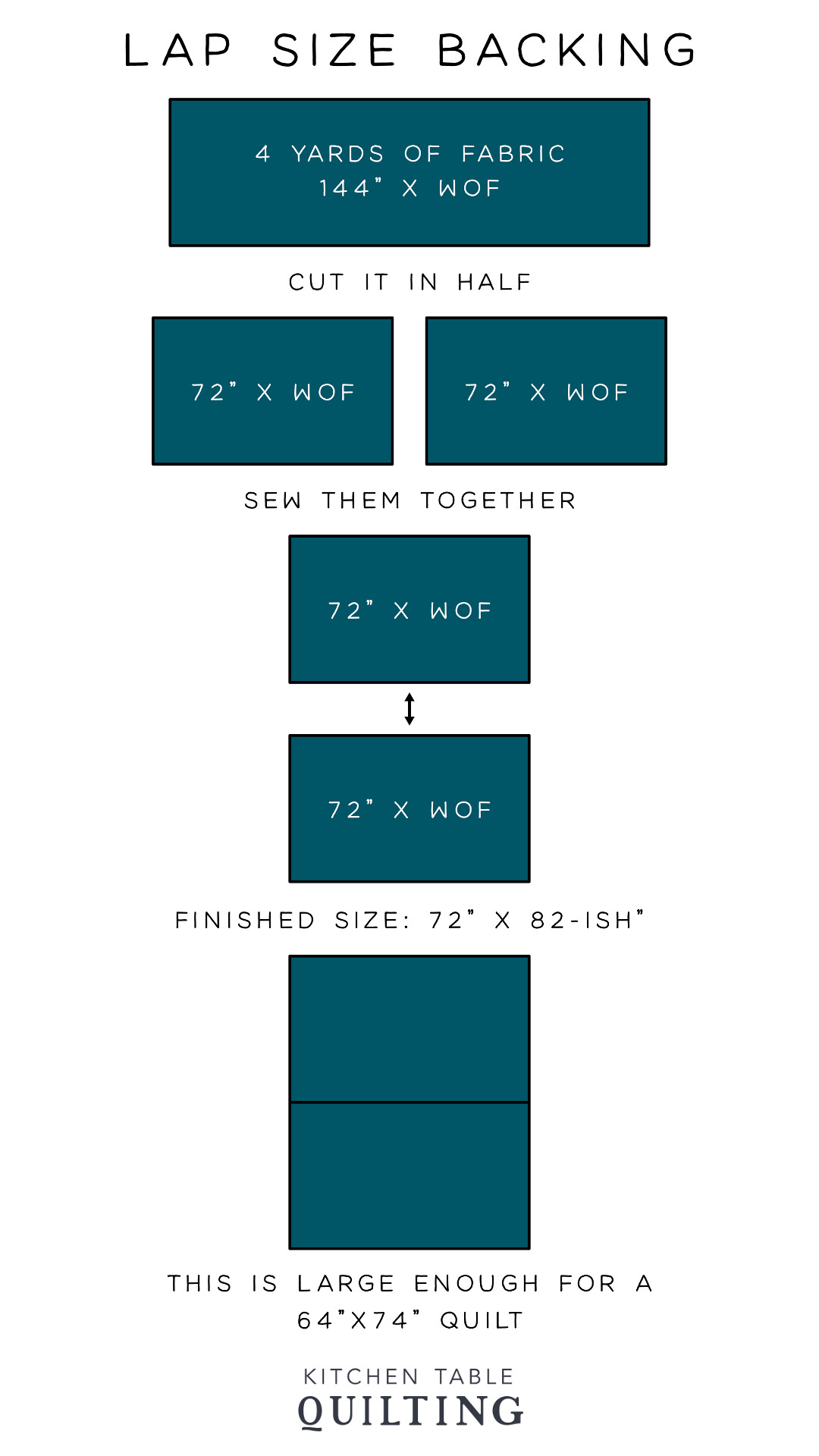
Twin Size
This size is where it might make more sense to buy 108" wide fabric.
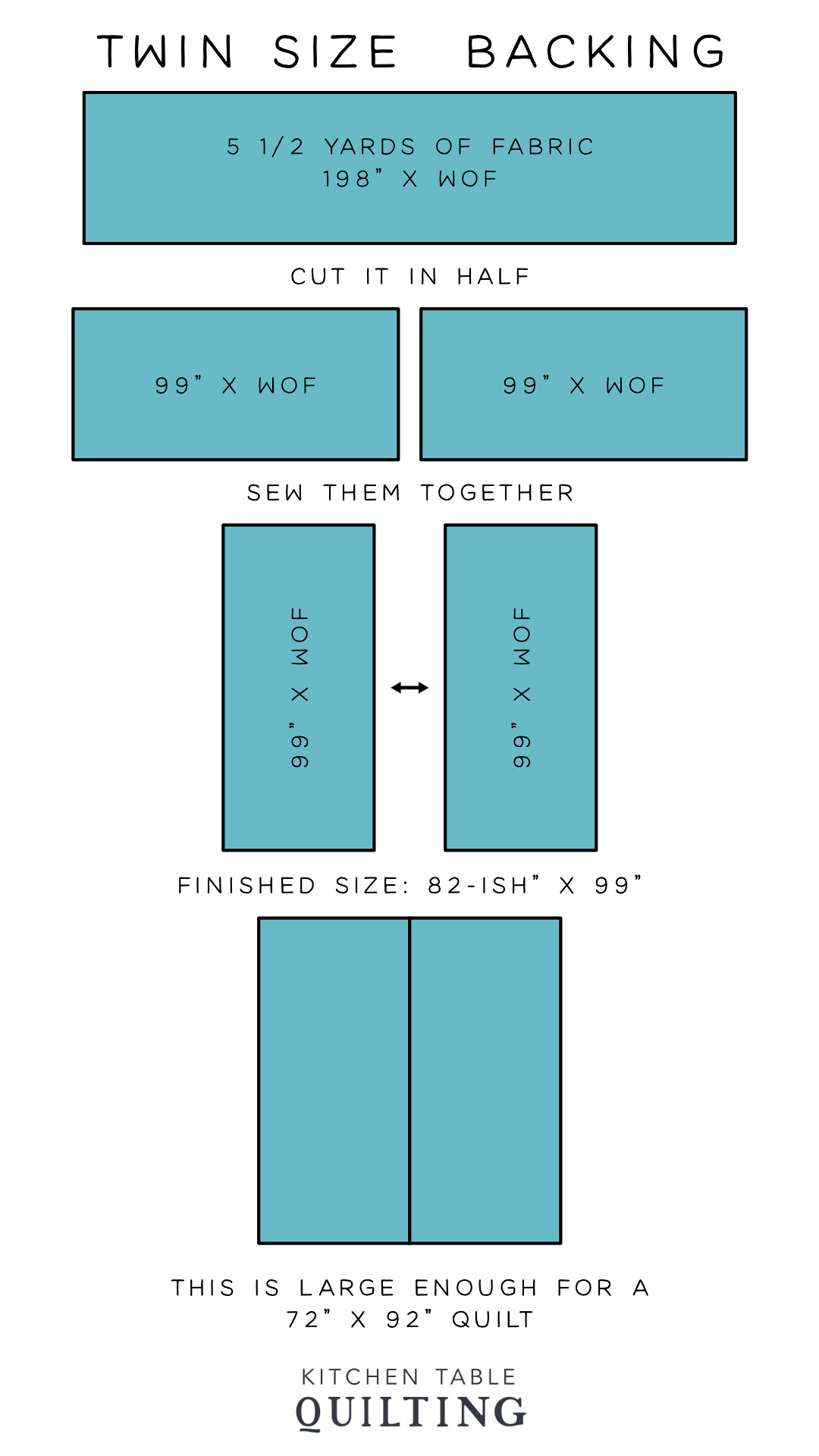

Queen Size
Queen size quilts are ideal for those 108" wide fabrics!
King Size
Using 108" fabric doesn't really make sense for a king size quilt since you need more than 108" in both directions so I am not giving instructions for piecing a king size backing from wide back fabric.
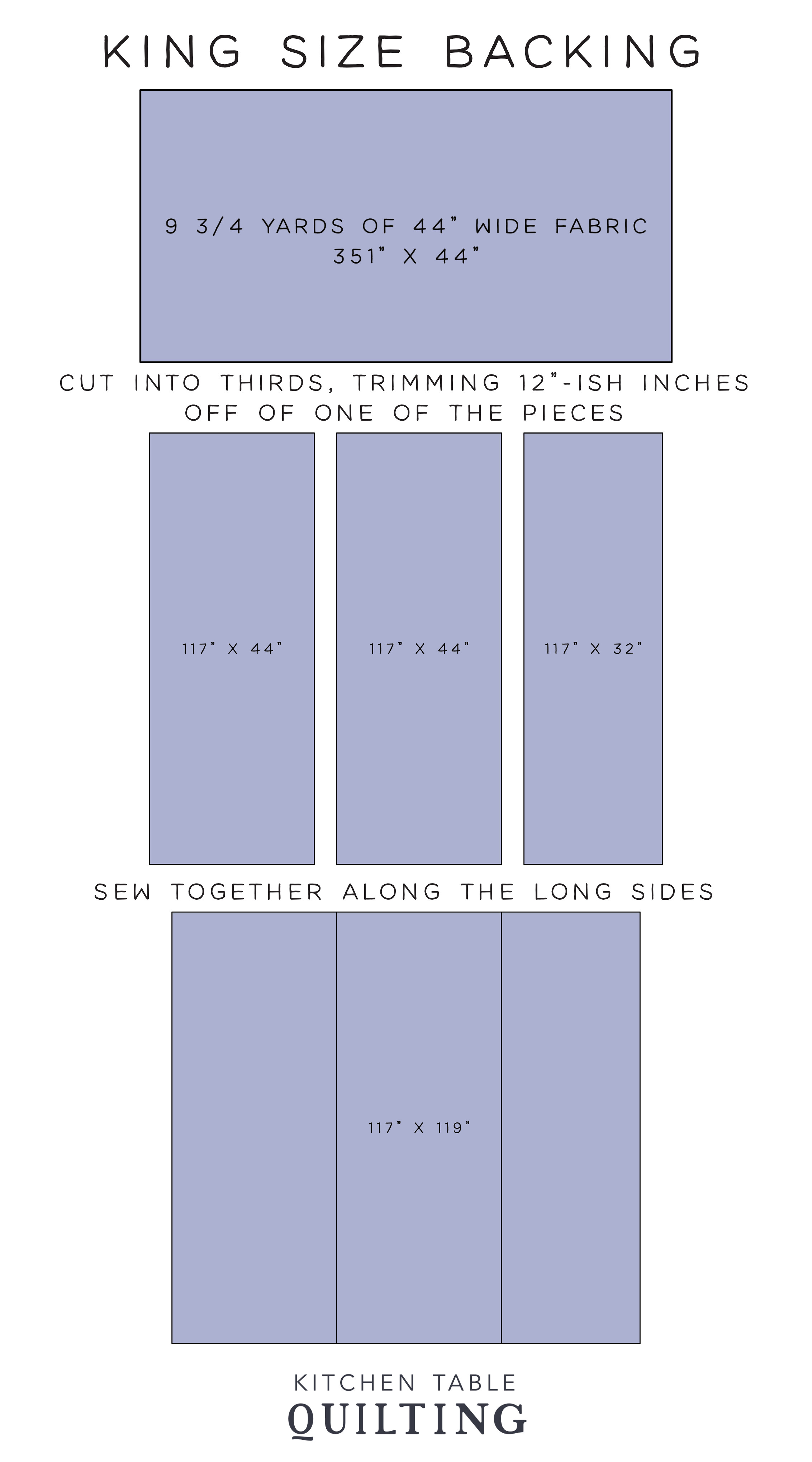
Keep in mind that if you would like to match the pattern on the back of your quilt, you will need additional yardage. I do not usually take the time to match yardage since this is one of my least favorite steps in the quilting process and it requires extra yardage. If you would like a tutorial on matching seams, there are lots out there.
Also, consider the direction of your fabric for your backing. This isn't something I worry about since I am making quilts to be used and I never think about the direction of the backing fabric when I am using a quilt, but it is something to consider.
I hope that you found this information helpful!

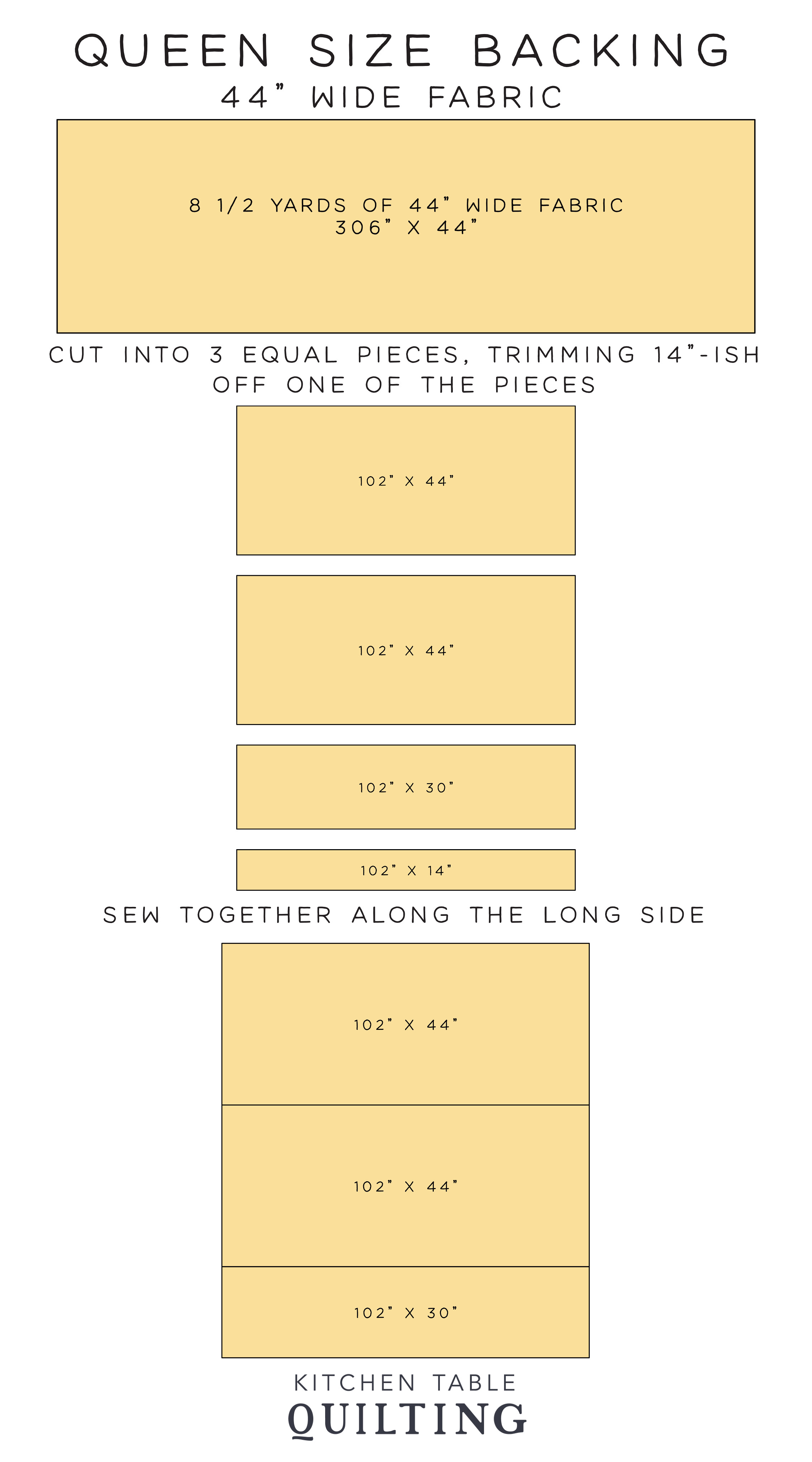
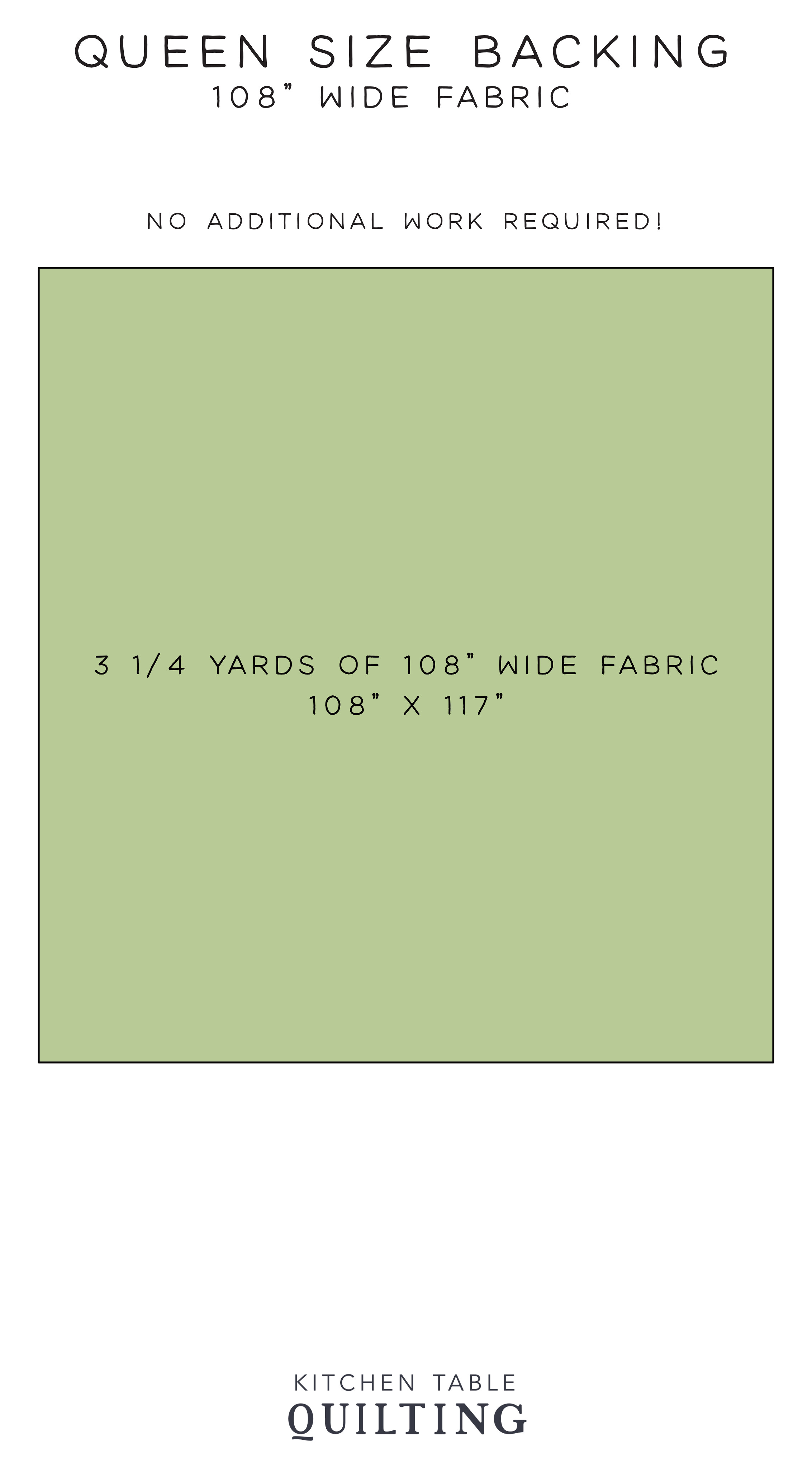
Clara on
Fabulous information, thank you! I love the pattern for the baby quilt, beautiful!
Melanie on
So helpful! Would love to see this in a pdf so I could print it out.
Joan Collins on
This helps greatly! I look and look for how to do this so I will save this email. Thank you
Joan on
Thank you! I don’t think I have ever NOT had to piece a backing, even when a measure and buy, somehow the back just magically shrinks! This will help tremendously!
Kathy on
Thank you so much for offering this information. It is quite helpful. I was just making quilt backing as I am ready to rent a long arm quilting machine to finish several quilts. I was having to search the internet for how to make my backings. I have saved this post to a safe place for the next time I need it. Thanks again!